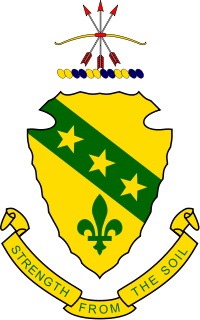Lynn Frazier
| Lynn Joseph Frazier | |
|---|---|
 | |
| United States Senator from North Dakota | |
|
In office March 4, 1923 – January 3, 1941 | |
| Preceded by | Porter J. McCumber |
| Succeeded by | William Langer |
| 12th Governor of North Dakota | |
|
In office January 3, 1917 – November 23, 1921 | |
| Lieutenant | Howard R. Wood |
| Preceded by | L. B. Hanna |
| Succeeded by | Ragnvald Nestos |
| Personal details | |
| Born |
December 21, 1874 Medford, Minnesota |
| Died |
January 11, 1947 (aged 72) Riverdale, Maryland |
| Resting place |
Hoople Cemetery, Hoople, North Dakota |
| Political party | Republican/Nonpartisan League |
| Spouse(s) |
Lottie J. Stafford (m. 1903–35) Cathrine Behrens Paulson (m. 1937–47) |
| Alma mater | University of North Dakota |
| Profession | Farmer, Teacher |
| Religion | Methodist |
Lynn Joseph Frazier (December 21, 1874 – January 11, 1947) was a politician from North Dakota, serving as a U.S. Senator from 1923 to 1941 and the 12th Governor of North Dakota from 1917 until being recalled in 1921. He was the first American governor ever successfully recalled from office. The only other time a gubernatorial recall has been successful was in 2003 to California Governor Gray Davis.
Biography
Frazier was born in Medford, Minnesota. His family moved to North Dakota when he was six years old. Prior to his career in state and national politics, Frazier was a farmer and school teacher.[1] He graduated from Grafton High School in 1892 and Mayville Normal School in 1895. He completed his bachelor's degree at the University of North Dakota, graduating with honors in 1902. He was twice married – to Lottie J. Stafford, with whom he had five children, from November 26, 1903 until her death on January 14, 1935,[2] and his second wife, Catherine Paulson, a widow whom he married in 1937.[1][2]
Career
After running in the Republican primary as the Non-Partisan League candidate, Frazier was elected Governor in 1916 with 79% of the vote. Frazier was extremely popular and implemented several reforms such as the establishment of the Bank of North Dakota and the North Dakota Mill and Elevator. He was re-elected twice, in 1918 and 1920, but an economic depression hit the agricultural sector during his third term and resulted in a private-business-led grassroots movement to press for his recall. The movement succeeded, and in 1921 the Frazier was the first governor to be successfully removed from office.[3] Independent Voters Association member Ragnvald A. Nestos was elected in his place.
After the recall, Frazier was elected in 1922 to the United States Senate, again as the NPL candidate on the Republican ticket. He served until losing a bid for re-election in 1940, being unseated in the Republican primary by William Langer.
During the 1919 national coal strike Governor Frazier took a unique approach to the strike. He declared martial law, took over the mines with United Mine Workers of America contracts and ran them in cooperation with the union.[4]
Governor Frazier is portrayed in the 1984 Nebraska Public TV documentary "Plowing up a Storm".
Death
Frazier died in Riverdale, Maryland, on January 11, 1947, at the age of 72. He is buried in Hoople Cemetery, Hoople, North Dakota.[5]
See also
References
- 1 2 "Lynn Frazier". National Governors Association. Retrieved 5 September 2012.
- 1 2 "Lynn J. Frazier Papers" (PDF). North Dakota State University. Retrieved 2013-07-07.
- ↑ "Lynn Frazier". Soylent Communications. Retrieved 5 September 2012.
- ↑ Perlman, Selig and Philip Taft. History of Labor in the United States, 1896–1932. Volume IV Labor Movements. MacMillan: NY, 1935. p. 525; and Jeremy Brecher. Strike. South End Press: Boston. 1999. pp. 150–151.
- ↑ "Lynn Frazier". Find a Grave. Retrieved 5 September 2012.
External links
| Wikimedia Commons has media related to Lynn Frazier. |
- United States Congress. "Lynn Frazier (id: F000354)". Biographical Directory of the United States Congress.
- Soylent Communications
- Lynn Frazier at Find a Grave
- National Governors Association
| Political offices | ||
|---|---|---|
| Preceded by L. B. Hanna |
Governor of North Dakota 1917–1921 |
Succeeded by Ragnvald A. Nestos |
| United States Senate | ||
| Preceded by Porter J. McCumber |
U.S. Senator (Class 1) from North Dakota 1923–1941 Served alongside: Edwin F. Ladd, Gerald Nye |
Succeeded by William Langer |

